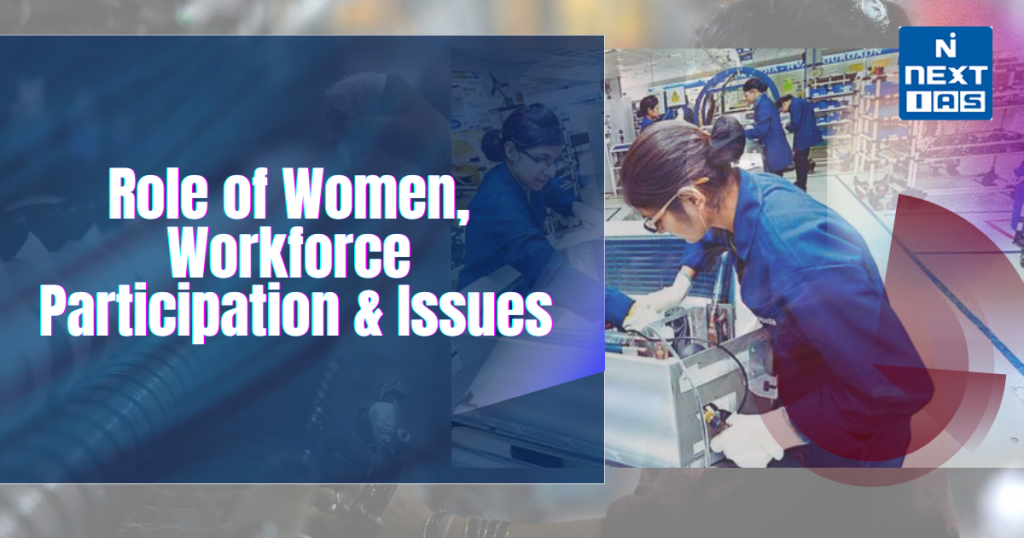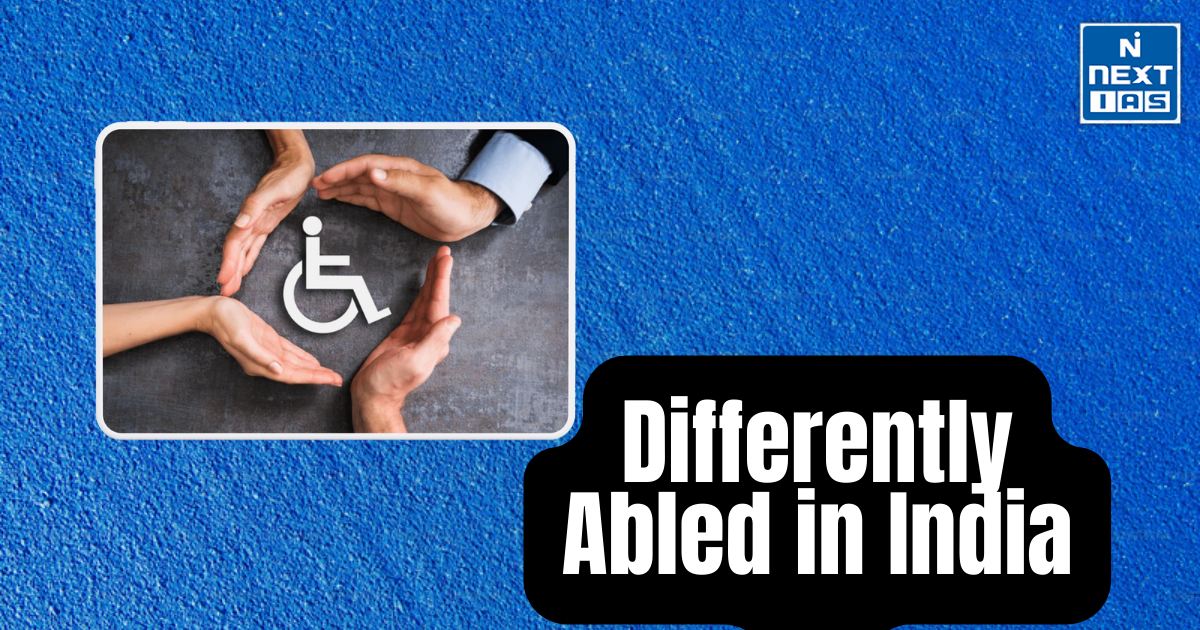
The role of women in India spans across social, economic, and political spheres, contributing significantly to the country’s development and progress. However, challenges like low workforce participation and gender-based issues highlight the need for inclusive policies and empowerment initiatives. This article aims to study in detail the role of women in Indian society, their workforce participation, and the key issues they face.
About Women in India
- Women play a vital role in shaping societies and economies through their contributions in various sectors, both formal and informal.
- In India, however, women’s participation in the workforce has been historically low, and they face numerous challenges that hinder their full potential.
Role of Women in Society
Women in India have a multifaceted role, encompassing their responsibilities as caregivers, educators, entrepreneurs, and leaders:
- Caregiving: Women traditionally bear the primary responsibility for household chores, childcare, and eldercare, often without monetary recognition.
- Economic Contribution: Women contribute significantly to agriculture, small-scale industries, and the informal sector.
- Leadership: Women in politics, corporate boardrooms, and social movements have been instrumental in driving change and inspiring others.
- Education and Health: Women’s education leads to better health outcomes, reduced child mortality, and improved quality of life for families and communities.
Female Labour Force Participation Rate (FLFPR)
- The FLFPR measures the proportion of women actively engaged in the labor force, either employed or seeking work.
- In India, FLFPR has been persistently low compared to global standards.
Factors Affecting FLFPR
- Education: Increasing levels of education paradoxically lead to lower FLFPR in India, as women opt out of low-paying jobs.
- Unpaid Work: A significant proportion of women are engaged in unpaid domestic and care work, which is excluded from labor force metrics.
- Cultural Norms: Traditional gender roles discourage women from seeking employment, especially in male-dominated industries.
- Safety Concerns: Lack of safe transportation and workplace harassment deter women from entering the workforce.
- Economic Slowdown: Job scarcity in sectors traditionally employing women, such as textiles and agriculture, further reduces opportunities.
Issues Concerning Women
Economic Challenges
- Wage Gap: Women earn significantly less than men for the same work.
- Job Insecurity: Women are often employed in informal and unorganized sectors, which lack social security and job stability.
- Glass Ceiling: Women face barriers to career advancement due to discrimination and biased workplace practices.
Health and Well-being
- Maternal Health: While maternal mortality rates have improved, many women lack access to quality healthcare during pregnancy and childbirth.
- Reproductive Rights: Lack of awareness and societal taboos restrict women’s access to contraception and family planning resources.
- Mental Health: Women face higher levels of stress and depression due to work-life balance challenges and societal pressures.
Education and Skills
- Dropout Rates: Girls often drop out of school due to early marriages, menstruation stigma, and lack of sanitation facilities.
- Access to Higher Education: Gender biases in STEM fields and professional courses limit women’s presence in high-paying industries.
Safety and Security
- Gender-Based Violence: Women face domestic violence, sexual harassment, and trafficking.
- Workplace Harassment: Inadequate implementation of laws like the Sexual Harassment of Women at Workplace Act, 2013, continues to be a concern.
- Public Safety: Poor infrastructure, including lack of streetlights and public transport, restricts women’s mobility.
Legal and Social Inequalities
- Gender Discrimination: Women face biases in inheritance rights, property ownership, and legal proceedings.
- Political Representation: While women’s reservation in local governance has shown success, their representation in Parliament and state legislatures remains low.
Initiatives to Empower Women in India
Government Schemes
- Beti Bachao, Beti Padhao: Aimed at improving education and health outcomes for girls.
- Pradhan Mantri MUDRA Yojana: Provides loans to women entrepreneurs.
- Mahila E-Haat: Promotes online marketing for women entrepreneurs.
- One Stop Centres: Support victims of violence with counseling and legal assistance.
Legal Reforms
- Strengthening laws against domestic violence, dowry, and workplace harassment.
- Amendments to inheritance laws to ensure equal rights for women.
Community and NGO Efforts
- Grassroots organizations like SEWA (Self Employed Women’s Association) empower women in informal sectors.
- Advocacy campaigns by NGOs help raise awareness about women’s rights and gender equality.
Skill Development Programs
- National Skill Development Mission: Focuses on equipping women with vocational skills.
- Digital Literacy Programs: Promote digital inclusion among rural women.
Recommendations to Enhance Women’s Participation
- Policy Interventions: To implement gender-responsive budgeting to allocate resources effectively for women’s development.
- To encourage maternity benefits and paternity leave to promote shared caregiving responsibilities.
- Education and Skill Development: To expand scholarships and incentives for girls in higher education and vocational training.
- To introduce gender-sensitivity training in schools and workplaces.
- Economic Empowerment: To promote microfinance and self-help groups for women entrepreneurs.
- To bridge the digital divide to include women in the gig economy and e-commerce.
- Workplace Reforms: To strengthen enforcement of anti-harassment laws.
- To ensure flexible work hours, childcare facilities, and equal pay policies.
- Safety and Security: To invest in infrastructure like women’s hostels, safe public transport, and secure workspaces.
- To increase women’s representation in law enforcement to address gender-based violence effectively.
- Cultural Change: To use media campaigns to challenge stereotypes and promote positive role models.
- To encourage men to share household responsibilities and support women’s ambitions.
Conclusion
Women’s empowerment and increased participation in the workforce are essential for India’s socio-economic progress. Addressing the challenges of low FLFPR and systemic inequalities requires a concerted effort from the government, private sector, and society at large. By creating an enabling environment that fosters equality and removes barriers, India can unlock the immense potential of its women, ensuring a brighter and more inclusive future.
GS - 2





